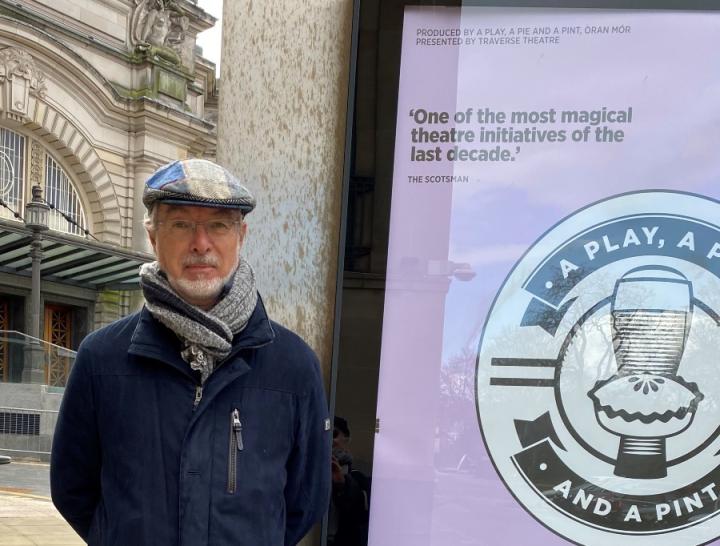Shakespeare film adaptation review by James Ellison
Centre of Open Learning Teaching Fellow, James Ellison gives us his thoughts on the recent Shakespeare adaptations in film.
Shakespeare hits the streets of Manhattan’s Upper West Side! Today one of the most expensive pieces of real estate on the planet, back in the 1950s the district housed a mixed community of poor whites and immigrants from Puerto Rico. This is the setting for West Side Story (1957), the dazzling musical by Stephen Sondheim and Leonard Bernstein, adapted from Shakespeare’s Romeo and Juliet (1596). Originators Leonard Bernstein and Arthur Laurents, changed the street fighting from a vendetta between Montagues and Capulets to interracial conflict between whites and Puerto Ricans, but the knife-fighting is the same. Bernstein’s music includes some anarchic Latin American numbers which make ‘Strictly’ look like a vicar’s tea-party. Stephen Spielberg’s new version (2022) is just as good as the famous film of 1961. The new film features Rita Moreno, who had originally played the role of Anita in the original film, as an older woman in the community, and has a brilliant script re-written by gay activist Tony Kushner.
Spielberg leads the musical back to Shakespeare: at several points he channels the extravagant film by Franco Zeffirelli of Romeo and Juliet, shot at various gorgeous Italian locations and released in 1968. But for much better acting in the lead parts, go to Baz Luhrmann’s Romeo + Juliet (1996), shot in Mexico City in a drug-fuelled world of cartel violence. The 21 year-old Leonard Di Caprio is astonishing as Romeo while Clare Danes is almost equally impressive.

What could be more fun than to rent a Tuscan villa, invite a few actorly friends, and knock off a lively Shakespeare adaptation among the cypress trees and Chianti vineyards? Kenneth Branagh is one of the most clubbable of actors, and he assembled a dazzling cast for his Much Ado about Nothing (1993), still one of his best Shakespeare films. Branagh plays Benedick and his then-partner Emma Thompson is Beatrice: they don’t underplay the violent moments in the script, but the whole piece resonates happy holidays and a film cast really enjoying each others’ company for once.
Much closer to Shakespeare’s own conception of Italy is the greatest Shakespeare film ever made, Orson Welles’s Othello (1951). Orson had fled the United States in fear of being black-listed for his left-wing opinions, and shot this film over a number of years on a shoestring budget. It was finally assembled from a heap of negatives on the cutting room floor, and the first half hour (shot primarily in Venice) can be confusing if you don’t know the opening of the play quite well. As the play progresses there are spectacular scenes on the huge medieval ramparts of Essaouira in Morocco and riveting performances by Welles and the great Irish actor Micheál Mac Liammóir, surely the most evil and desperate Iago ever.
Finally, for an outrageous romp, Zeffirelli’s The Taming of the Shrew (1967) is still fun. Starring Richard Burton and Elizabeth Taylor (who can act really well, despite rumours to the contrary), it was shot in studios at Rome. Burton is completely preposterous as the financially-strapped wooer of the shrewish Kate, while Taylor brings a great dignity and empowerment to the obedient wife she apparently becomes at the end of the play, always a difficult moment from the perspective modern liberal values. Zeffirelli’s two films mentioned here are the only ones of the list shot in period costume, but they are not realistic in any sense: instead he aims to bring the boldness and immediacy of the live-theatre experience to the big screen.
Finally, honourable mention of a Shakespeare play which transposes the Athenian woods to nineteenth-century Tuscany, Michael Hoffman’s A Midsummer Night’s Dream (1999). Hoffman gathered together an extraordinary cast: Michelle Pfeiffer is Titania, Rupert Everett plays Oberon and Stanley Tucci is Puck. The four lovers are played by Calista Flockhart, Anna Friel, Christian Bale, and Dominic West, while Kevin Kline is Bottom. The whole thing looks extraordinary, even if it doesn’t quite capture the humour and magic of the play.

